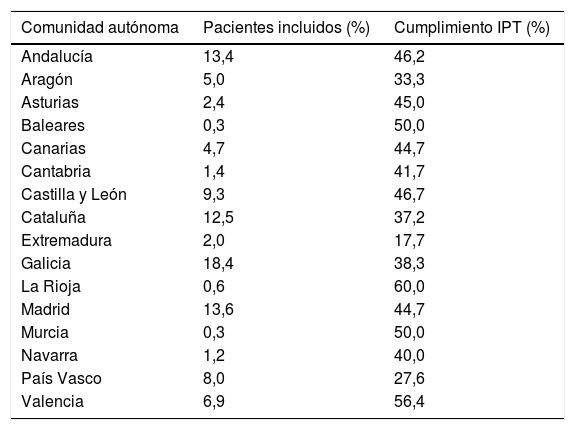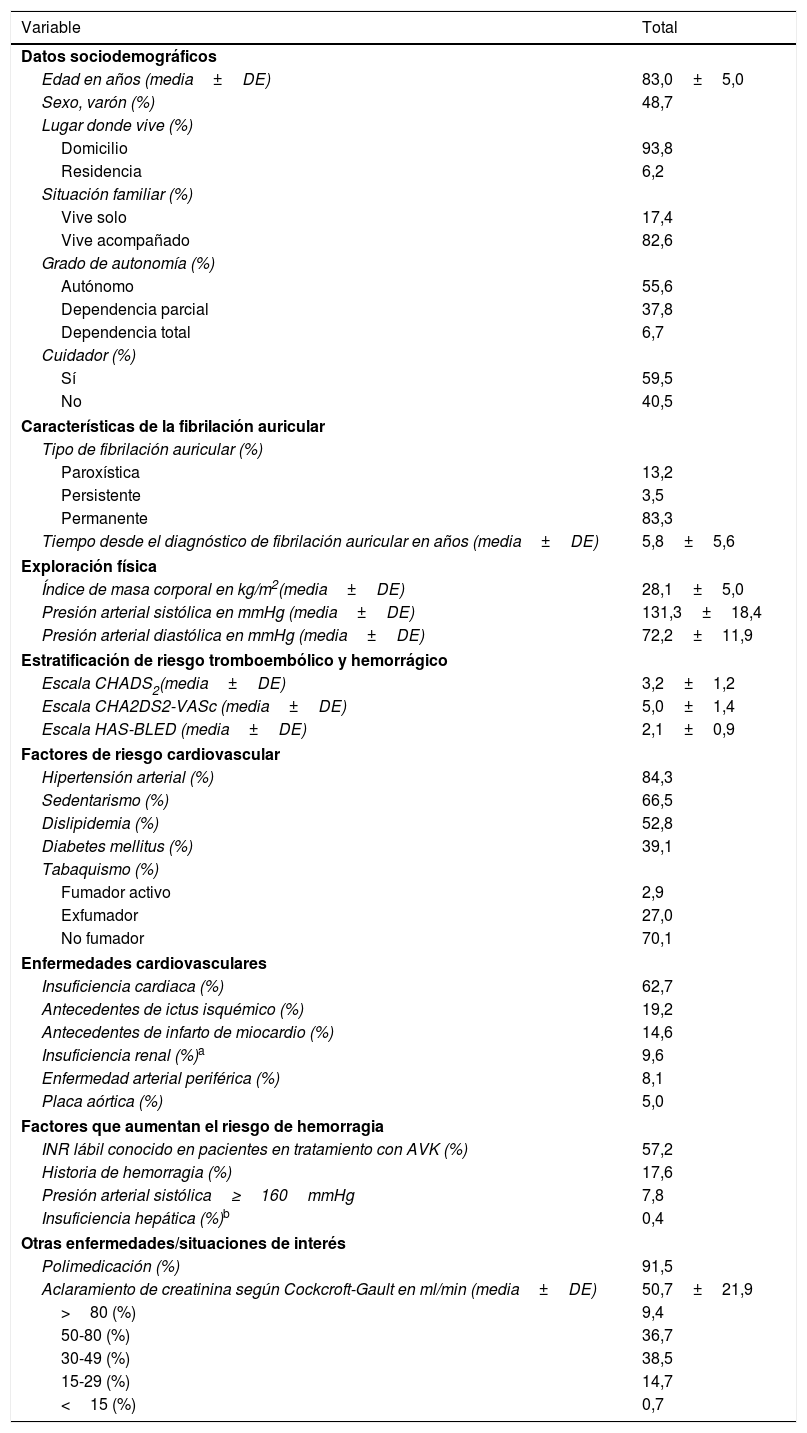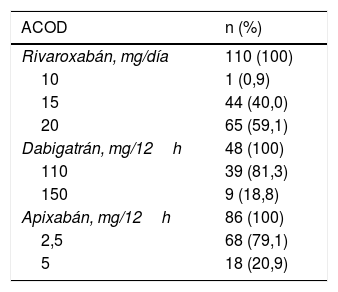Evaluar en la práctica clínica el cumplimiento de las recomendaciones del Informe de Posicionamiento Terapéutico (IPT) de la Agencia Española de Medicamentos y Productos Sanitarios sobre el tratamiento con anticoagulantes orales en pacientes≥75 años con fibrilación auricular no valvular (FANV) atendidos en unidades de Medicina Interna en España.
Pacientes y métodosEstudio observacional, transversal y multicéntrico, en el que se incluyeron 837 pacientes≥75 años con FANV en tratamiento estable con anticoagulantes orales durante los 3 meses previos a la inclusión y que hubiesen iniciado dicho tratamiento antes de comenzar el período de inclusión.
ResultadosLa edad media fue de 83,0±5,0 años, el CHADS2 medio 3,2±1,2, el CHA2DS2-VASc 5,0±1,4 y el HAS-BLED 2,1±0,9. El 70,8% de los pacientes estaba en tratamiento con antagonistas de la vitamina K (AVK) y el resto con anticoagulantes orales de acción directa (ACOD). El 65,6% de los pacientes con AVK no siguieron las recomendaciones del IPT frente al 43,0% de los pacientes con ACOD (p<0,0001). En el caso de los pacientes con AVK, el motivo principal para ser considerado como no adecuado fue presentar un mal control de la anticoagulación y no cambiar a un ACOD, mientras que en el caso de los ACOD fue recibir una dosis inadecuada según el IPT.
ConclusionesEn un porcentaje elevado de pacientes ancianos con FANV anticoagulados en España no se siguen las recomendaciones realizadas por el IPT, especialmente con los AVK, al no realizarse el cambio a ACOD a pesar de un tiempo en rango terapéutico inadecuado.
To evaluate the adherence to the recommendations in clinical practice performed by the Therapeutic Positioning Report (TPR) of the Spanish Agency of Medicines and Sanitary Products about the treatment with oral anticoagulants in patients aged≥75 years old with nonvalvular atrial fibrillation (NVAF) treated in Internal Medicine departments in Spain.
Patients and methodsObservational, cross-sectional and multicenter study in which 837 patients aged≥75 years old with NVAF, with stable treatment with oral anticoagulants at least 3 months before inclusion, and that had started treatment with oral anticoagulants before the inclusion period were included.
ResultsMean age was 83.0±5.0 years old, mean CHADS2 score 3.2±1.2, mean CHA2DS2-VASc score 5.0±1.4, and mean HAS-BLED score 2.1±0.9. A percentage of 70.8 of patients were treated with vitamin K antagonists (VKA) and the rest of patients with direct oral anticoagulants (DOACs). A percentage of 65.6 of patients treated with VKA did not follow the recommendations made by the TPR compared with 43.0% of patients treated with DOACs (P<.0001). In the case of VKA, the main reason for being considered as not appropriate according to the TPR was having poor control of anticoagulation and not switching to DOACs, whereas in the case of DOACs, it was not receiving the adequate dose according to the TPR.
ConclusionsIn a high proportion of anticoagulated elderly patients with NVAF in Spain, the recommendations performed by the TPR are not followed, particularly with VKA, since patients are not switched to DOACs despite time in therapeutic range.
Artículo
Comprando el artículo el PDF del mismo podrá ser descargado
Precio 19,34 €
Comprar ahora













